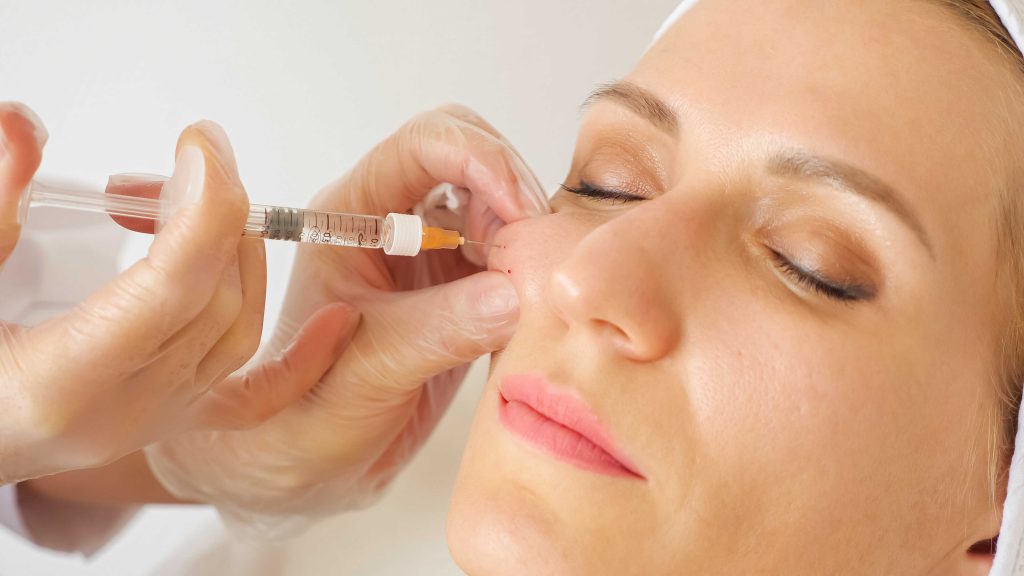
Cheek fillers have become one of the most popular cosmetic procedures in recent years, offering a non-surgical solution to restore volume, enhance facial contours, and achieve a youthful appearance. These injectable treatments are commonly used to address sagging cheeks.
Restore volume loss due to aging, or enhance the natural shape of the cheeks for a more defined and sculpted look. While fillers can deliver remarkable results, it’s important to be aware of both the benefits and potential risks associated with the procedure.
What Are Cheek Fillers?
Cheek fillers, often made from hyaluronic acid (HA), calcium hydroxylapatite, or poly-L-lactic acid, are injectable dermal fillers that add volume to the cheeks and the surrounding area. These substances are carefully injected into the cheek area to restore lost volume, smooth out wrinkles, and lift sagging skin.
The procedure is typically performed by a licensed medical professional, such as a dermatologist or plastic surgeon, and does not require general anesthesia or significant downtime.
Benefits of Cheek Fillers
Restores Volume and Fights Aging
As we age, we naturally lose volume in the face, particularly in the cheek area. This loss of volume can contribute to a hollowed-out or sunken appearance, which often leads to sagging skin and the formation of deep lines or wrinkles. Cheek fillers can restore lost volume and provide a fuller, more youthful appearance. By lifting and plumping the cheeks, fillers can reduce the visible signs of aging and improve overall facial harmony.
Non-Surgical Solution
One of the biggest advantages of fillers is that they provide a non-invasive alternative to traditional surgical options like facelifts or fat grafting. With no need for incisions, anesthesia, or long recovery times, fillers offer a quick and relatively painless way to achieve a more youthful look. The procedure typically takes about 30 minutes, and many patients can return to their normal activities immediately afterward.
Customizable Results
Fillers are highly customizable, which means they can be tailored to meet the specific needs of each patient. Whether you want subtle volume restoration or a more dramatic enhancement, the amount of filler used and the technique applied can be adjusted to create the desired outcome. This makes the procedure suitable for a wide range of patients, from those looking to restore lost volume to those seeking to enhance the natural contours of their face.
Minimal Downtime
Compared to surgical options, fillers have minimal downtime. Most patients experience only mild swelling or bruising at the injection sites, which typically subsides within a few days. There is no need for bandages or post-surgery care, and the results are often visible almost immediately, with full effects becoming apparent within a week or two. This makes a popular option for individuals with busy lifestyles who may not have time for a lengthy recovery period.
Long-lasting but Temporary Results
Fillers can last anywhere from six months to two years, depending on the type of filler used and individual factors such as metabolism and lifestyle. This duration of effectiveness provides patients with long-term results without the permanence of surgery. If desired, additional treatments can be scheduled to maintain the results, or the filler can be gradually dissolved by a healthcare professional.
Boosts Self-Confidence
For many individuals, the cosmetic improvement provided by cheek can have a positive impact on self-esteem and body image. Restoring volume to the cheeks or achieving a more sculpted look can enhance a person’s overall facial appearance, making them feel more confident in their appearance. This can be especially true for those who experience age-related volume loss, as it can help them feel more youthful and refreshed.
Risks of Cheek Fillers
While the benefits of fillers are numerous, it is essential to consider the potential risks before deciding to undergo the procedure. Like any cosmetic treatment, certain complications may arise.
Bruising and Swelling
One of the most common side effects of filler injections is bruising and swelling at the injection sites. These side effects are typically mild and temporary, but they can cause some discomfort or concern, especially if the swelling persists for longer than expected. Most patients experience swelling that resolves within a few days, but in rare cases, swelling may take longer to subside.
Infection
As with any procedure that involves injections, there is a small risk of infection. If the area where the filler was injected is not properly sanitized or if the aftercare instructions are not followed, bacteria could enter the skin, leading to an infection. Signs of infection include redness, warmth, pus, and fever. To minimize this risk, it’s important to choose a qualified and experienced medical professional who follows proper hygiene and safety protocols.
Asymmetry or Uneven Results
Though are customizable, Vampire Facial, there is always a risk that the results may not be perfectly symmetrical or balanced. Some patients may experience uneven distribution of the filler, leading to lumpy or asymmetric cheeks. In such cases, additional touch-ups or adjustments can be made to correct the issue, but it is important to have realistic expectations and communicate openly with your injector about the desired outcome.
Allergic Reactions
While rare, some individuals may experience an allergic reaction to the ingredients in the dermal filler. This could lead to itching, redness, swelling, or more severe reactions. If you have a history of allergies or sensitivities to dermal fillers or similar substances, it’s important to discuss this with your doctor before the procedure. An allergy test may be recommended to ensure the safety of the filler.
Conclusion
Cheek fillers offer many benefits, including enhanced volume, a youthful appearance, and a non-invasive alternative to surgery. The procedure is customizable, minimally invasive, and can boost confidence for individuals looking to improve their facial contours. However, like any cosmetic treatment, come with certain risks, such as bruising, infection, and the potential for uneven results.